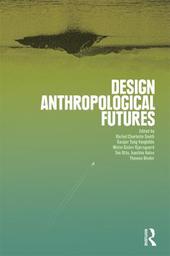
|
Design Anthropological Futures
Paperback / softback
Main Details
Description
A major contribution to the field, this ground-breaking book explores design anthropology's focus on futures and future-making. Examining what design anthropology is and what it is becoming, the authors push the frontiers of the discipline and reveal both the challenges for and the potential of this rapidly growing transdisciplinary field.Divided into four sections - Ethnographies of the Possible, Interventionist Speculation, Collaborative Formation of Issues, and Engaging Things - the book develops readers' understanding of the central theoretical and methodological aspects of future knowledge production in design anthropology. Bringing together renowned scholars such as George Marcus and Alison Clarke with young experimental design anthropologists from countries such as Denmark, Sweden, Austria, Brazil, the UK, and the United States, the sixteen chapters offer an unparalleled breadth of theoretical reflections and rich empirical case studies.Written by those at the forefront of the field, Design Anthropological Futures is destined to become a defining text for this growing discipline. A unique resource for students, scholars, and practitioners in design anthropology, design, architecture, material culture studies, and related fields.
Author Biography
Rachel Charlotte Smith is Assistant Professor of Design Anthropology at the Centre for Participatory Information Technology (PIT), Aarhus University, DenmarkKasper Tang Vangkilde is Associate Professor of Anthropology at Aarhus University, DenmarkMette Gislev Kjaersgaard is Associate Professor of Design Anthropology at the University of Southern Denmark, DenmarkTon Otto is Professor of Anthropology at Aarhus University, Denmark and at James Cook University, AustraliaJoachim Halse is Associate Professor of Design Anthropology at the Royal Danish Academy of Fine Arts, DenmarkThomas Binder is Professor of CoDesign at the Royal Danish Academy of Fine Arts, Denmark
ReviewsThis immensely rich anthology brings together three terms that have traditionally been kept apart. In so doing it enriches all three, highlighting in particular how design and anthropology can conjoin in the active and collaborative unfolding of social possibilities. This unique collection serves as an invitation to anyone interested in the intersection between design and social sciences to move beyond jargon and hype and equip themselves with a critical approach to conceptualising futures. Drawing on canonical anthropology as well as more experimental design anthropology, it is relevant for those who are interested in design thinking, service, social, sustainable, speculative, contestable and propositional practices... in short, in design and research for, with and by people. With Design Anthropological Futures, we see the emergent paradigm of a robust, design anthropology as a field in its own right that is beginning to generate its own theoretical insights. The chapters act as case studies for undergraduate courses, as contributions to an anthropology that looks beyond "applied" and "public" to making material differences in communities, and as a provocation to imagine anthropology not only as the study of alterity, but as productive of difference. This book should be of interest to those engaged in theorizing the entangled temporalities of past, present, and future, and to those concerned with the practical, political, and economic conditions in which professional design assumes its place in practices of future making. Most importantly, the futures imagined here are those in which the figure of design itself is subject to radical anthropological transformation.
|